Obsolete Arms and Ammo
By Bob Shell
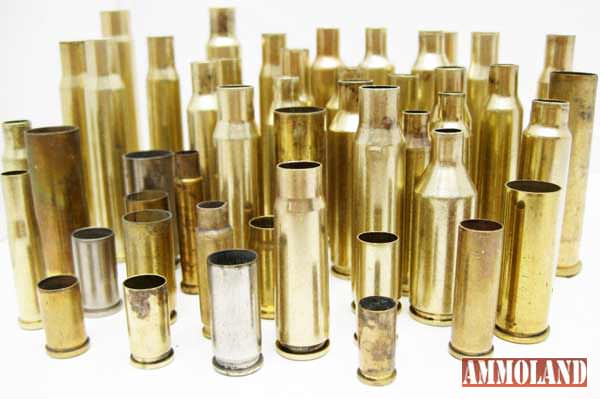

Apache Junction, AZ –-(Ammoland.com)- There are several types of Reloading Brass Cases and the hand-loader should be able to identify them and understand what significance they have.
The design determines how the Brass Cases is head spaced which determines on how you may load it.
One example is the 303 British. Many of the chambers were made too large so after sizing the case in a normal way a couple of times it may separate due to excess headspace. This was done so the rifle would still work if some dirt or mud got into the chamber. The solution is to size it just enough that it will chamber without pushing the shoulder back. The method for that is to screw the sizing die all the way down and backing off until it won’t chamber then turn just enough to enable them to chamber.
If a neck sizing die is available that is another option to explore. That changes the way it is head spaced but will stop them from separating. If you don’t have enough headspace it will be difficult or impossible to chamber the rounds. Too much will result in case separation or misfires. They will flop around in the chamber and the firing pin won’t hit them hard enough to fire them.
Rimmed Reloading Brass Cases
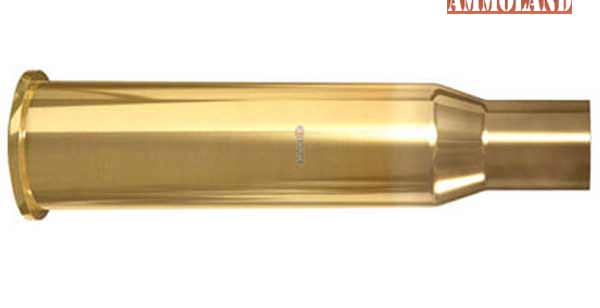
The first case is a Rimmed Reloading Brass Case. This has a rim that is larger in diameter then the case itself. They are used for many things today such as lever action rifles and most revolvers. They are also prevalent in single shot and double rifles as they are considered a better choice for ease of extraction. In fact, many rounds that started life as a rimless round has also been produced with a rim.
There are many examples such as the 222 Remington, 7 X 7, 8 X 57 and the 375 H & H. Some have the designation of flanged to help the buyer make the correct selection. While they can and have been used in bolt guns there are better choices.

Some militaries used a rimmed case for years such as the French 8 mm Lebel rifle. Also all shotgun gauges and the 22 rimfire are rimmed. The rim can make feeding in some guns more difficult and cut down on the number of rounds available in the magazine. The rim provides headspacing which is a good thing also making case forming easier. The rim also makes it easier for an extractor to grab and eject the case. That could be important for reliability when facing dangerous game. One method of using reduced loads is to use a shorter rimmed case as long as it is a straight case. An example is the 460 S & W. If you don’t want full power loads you can merely use a shorter piece of brass such as a 454 Casull, 45 Colt or a 45 Schofield can be substituted as they all headspace on the rim.
Rimless Bottleneck Reloading Brass Cases
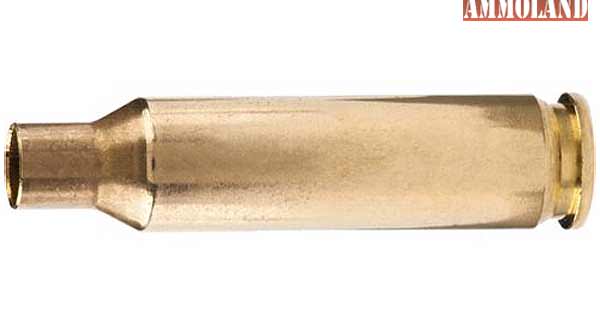
The rimless bottleneck case came out in the late 1880’s with the German 8 X 57 Commission rifle being one of the earlier examples. Today it is immensely popular being used in many sporting rifles, AR-15’s and machine guns. Since there is no protrusion beyond the case, feeding is usually very reliable. This case is also used in some handguns such as the 30 Luger and Mauser. Like the rifles feeding is seldom an issue. Many of the magnum cartridges that were designed in the last few years use the beltless bottle neck case to good advantage.
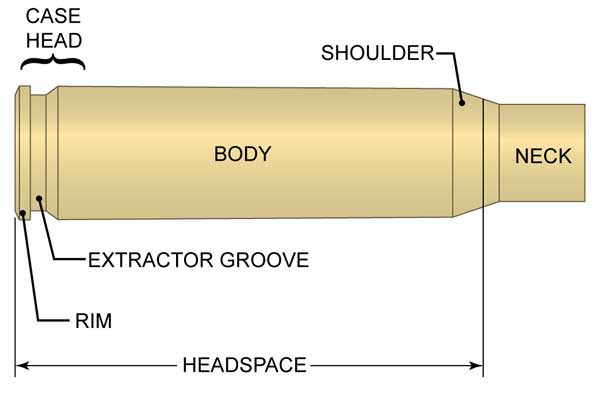
Rimless Straight Reloading Brass Cases
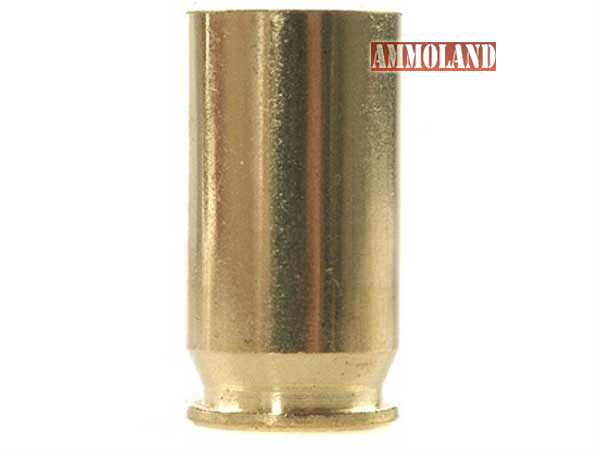
The rimless straight case is essentially made for semi auto pistols. Unlike the bottle neck it headspaces on the mouth which may give an inexperienced handloader some difficulty , Unless there is an odd situation such as an excessively long chamber or short cases you shouldn’t have any problems. I have loaded and shot many thousands of rimless rounds and never had a problem due to headspace issues. If however, you have excess headspace in one of these guns misfires will occur. The round will go too deep in the chamber and the firing pin can’t reach it. Too little will prevent the chambering of the offending round. When reloading use a taper crimp as opposed to a roll type and you shouldn’t have any problems. It does work well is such cartridges as the 9 mm brass , 40 auto and the 45 ACP brass. Some sub machine guns utilize this case design also. Some single action revolvers such as those made by Ruger also can use them but in a double action a moon clip is needed to get positive extraction. The 30 carbine also used the rimless straight case.
Semi Rimmed Reloading Brass Cases
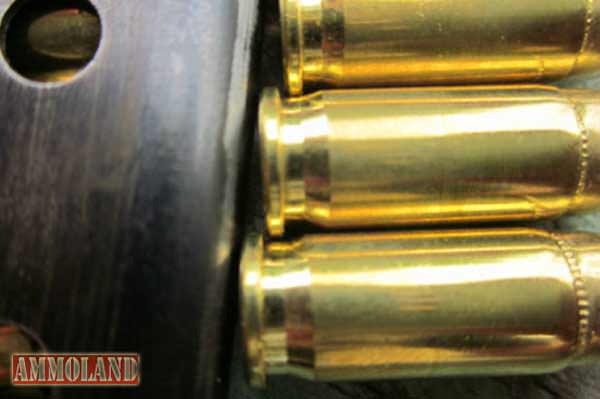
The semi rimmed isn’t as common as some of the others. It has a protruding rim but not as prevalent as a true rimmed case. Some examples are the 38 auto and super plus the 220 Swift and 225 Winchester rifle rounds. While they work ok I can’t think of any advantage over a rimless design. That along with the rebated rim are the least common. With such rounds as the Swift or the 225 you can headspace it either on the rim or the shoulder. That might come in handy if your chamber is a bit long, creating too much headspace. Adjust it as you would a fully rimmed case with the same issue.
Rebated Rim Reloading Brass Cases

The rebated rim was brought out to allow a smaller head case to be utilized with a larger diameter case. It might help with some arms designs or a gunsmithing project but unless you have a switch barrel gun there isn’t a lot to be gained by this design. On example is you can have a 9 mm and 41 A & E using the same gun by merely switching barrels and magazines. There are some other examples such as the 284 Winchester which is a good hunting round. A way out example is the 50 Beowulf which is a large 50 caliber but has a 7.62.×39 case rim dimension, allowing it to be used on a alternate platform.
From what I have heard it feeds reliably, interesting. One fairly popular rebated case was the 425 Wesley Richards magnum.
The whole point of the Rebated Rim Case Reloading Brass is you could put a larger diameter case and use a standard bolt face. Guns that are properly designed feed those rounds just fine.
Belted Reloading Brass Cases

The belted case was brought out about 100 years ago with the belief that it gave the case extra strength. The 400/375 Belted Nitro Express was the first belted cases introduced in 1905. The 375 H & H mag round made the belted case popular.
With the sloped shoulder of the 300 and 375 H & H cases, the belt might prove to be beneficial. But other then such an item as the 458 Win mag or 458 Lott there is no real advantage to having a belt on the case.

At one time it was believed that the belt was necessary to enhance the strength of the case. The newer 450 Marlin also employs a belt. The belt on the 450 is wider then normal so it won’t fit in a conventional magnum chamber.
Since it is short it could fit in a longer chamber such as a 300 or similar mag. Firing it would be disastrous as you would be pushing a 45 caliber bullet down a 7 mm or 30 caliber bore.
The belt on them takes up space and will cut down the magazine capacity by one round which might be important when facing an enraged cape buffalo.
Today many of the newer magnums have deleted the belt which will enhance their usefulness.
All of the newer short magnums have deleted the belt.
For reduced loads using a straight belted round just use a shorter case much as you would with a straight rimmed case. A 458 Lott will chamber a 458 Win or you can shorten the case to any length desired.
There are a couple of wildcats that are based on a shortened 458 case.
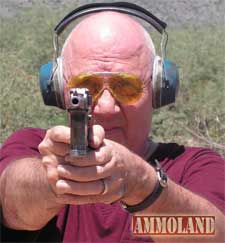
When you reload, it is important to have at least a basic understanding of the case types. Such knowledge will enable you to be more versatile and sometimes safer.
Making your own ammo is a craft and the more you know about it the more you get out of it.
Resources:
- Rifle Brass Case : https://goo.gl/kca77M
- Handgun Brass Cases : https://goo.gl/yJTJY3
- Shotgun Brass Case : https://goo.gl/R42zq1
About Bob Shell
A Custom Reloader of Obsolete and Antique Ammo, Bob Shell, writes about the subject of Guns, Ammo, Shooting and Related Subjects. Visit: www.bobshellsblog.blogspot.com

The 9mm Luger case is tapered, not straight.
The belt on a belted magnum was never used to strengthen a case. The belt is what the cartridge headspaces on. The reason for this is that the chambers could be made larger, which aided in extraction of shells in the hot climates of Africa for which the belted Magnums (also called “Express” at the time) we predominately designed for. These were all primarily used in double rifles, not bolt action, the the ease/reliability of extraction was a huge concern. Another problem is found here in the rimmed cartridges section: “There are many examples such as the 222 Remington, 7… Read more »
Probably referring to the 7.7×58 Arisaka which was commonly known as the 77 Jap.